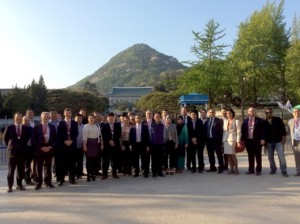
5 Key Takeaways at SWFI’s Institute Fund Summit Asia in Seoul
Posted on 05/04/2015
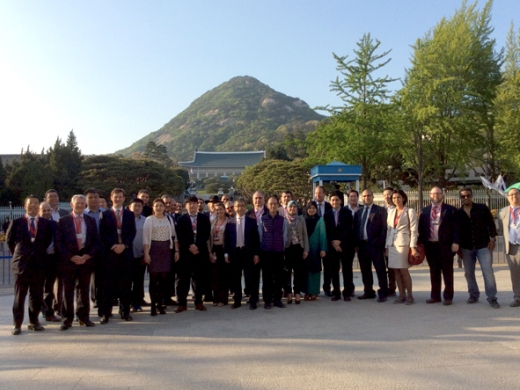
In late April, the Sovereign Wealth Fund Institute (SWFI) held its third Asia summit, this time in Seoul, Korea – a vibrant metropolis home to global companies such as Samsung, Hyundai and Lotte. South Korea’s rise to an economic powerhouse is fascinating. In 1957, South Korea and Ghana had nearly the same annual per capital global domestic product. Today, their stories couldn’t be more different. Walking down the busy streets of Seoul and districts such as the glitzy Gangnam section, Korea has become a model for emerging economies in general, and Asian economies specifically. With prosperity in exports and domestic consumption, Asian companies are expanding market share. Eric Moffett who manages money at T. Rowe Price made the case that Asian companies and their earnings are exposed to rising incomes in parts of Asia.
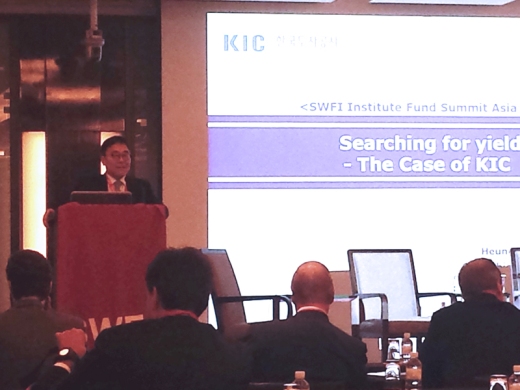
1. Managing Return Expectations and Handling Growing Sources of Risk
Through the revolving glass door of the Westin Chosun, the conference began with a presentation from the Chief Investment Officer of the Korea Investment Corporation (KIC) – Heungsik Choo. The world of sovereign wealth funds is changing, as the border between central banks managing reserves and sovereign wealth funds is slightly blurring. Choo touched on future investment returns, “market beta returns from fixed income and public equity will be much lower for future periods.” This aligns with what chief investment executives of Australia’s Future Fund, New Zealand Superannuation Fund and the California Public Employees’ Retirement System (CalPERS) have been stating all year. Long-term equity returns are being pressured downward as the risk-free rate remains low. The asset classes of infrastructure, real estate and private equity continually enroll new converts, creating higher demand for such products. New sources of return are a necessity. What can institutional investors like the KIC, GIC, ADIA and other wealth funds do to achieve returns?
2. Advent of Alternative Assets
Wealth funds and government pension funds have been expanding their investment universe, highlighting the importance of alternative investments and harvesting the illiquidity premium. Clifford Chiu, a senior advisor at Neuberger Berman and a KKR veteran, noted sovereign wealth funds are attracted to real asset characteristics such as negative correlations, inflation hedge and tenor matching. Thailand’s Government Pension Fund started looking at real assets in the early 2000s, mostly focusing on properties. The real asset portfolio for the fund has grown to cover North America and Europe. Finding attractive cap rates in developed markets is getting harder. In the frenzied buildup to find attractive, cash flowing properties, even Starwood-branded hotels in cities like New York are being treated like a scarce resource.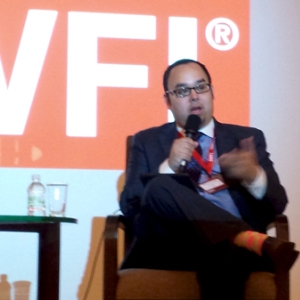
3. Climate Change and People Risk
Increasingly, institutional investor chiefs are uncovering new sources of risk. One of those risks is climate change, and AP4’s CEO Mats Andersson sees it as a major threat to institutional portfolios. About 10% of AP4’s global equities portfolio is low carbon (companies that have reduced carbon footprints). In 2012, AP4 issued low carbon mandates. Andersson professes a long-term view, the fund invests strategically with external managers on a 3 to 15 year basis, analyzing returns on a 3-year rolling, 5-year and 10-year basis.
Tony Tan, who heads the Standards and Financial Market Integrity division Asia-Pacific branch of the CFA Institute, said that a big risk that is not being heavily discussed is people risk. Tan said that, “people risk leads to governance risk.”
4. The Portfolio Debate and the Case of Active Management
Ed Goard from Victory Capital Management, who came to Seoul 30 years ago training with the South Korean army, commented that, “portfolio optimization is a 50-year-old concept.” The panel, which included representatives from TOBAM, State Street Global Advisors (SSgA), Victory Capital Management, AP4 and Misys, tackled the idea of optimizing the portfolio for a long-term institutional investor. TOBAM Founder Yves Choueifaty quickly pointed out that William Sharpe’s assumptions with regard to the Capital Asset Pricing Model (CAPM) are unrealistic. Estimating forward-looking returns on asset classes runs the risk of overweighting risk possessing the largest forecasting error. Michel Daenen of Misys chimed in saying, with regard to asset owners, “managing billions of dollars in Excel,” is high risk. The need for technological risk infrastructure for sovereign wealth funds is a necessity as they become entrenched as counterparties to many transactions in a plethora of jurisdictions.
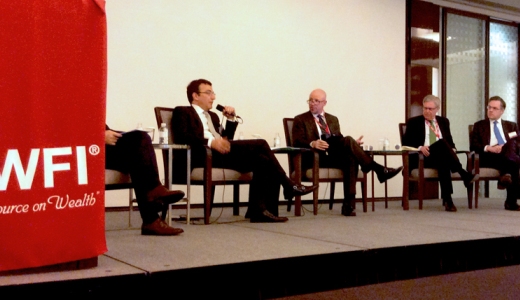
A topic that could not be avoided was smart beta. Kevin Anderson, head of investments in the Asia-Pacific region from SSgA, stated, “larger sovereign wealth funds have been asking about advanced beta or factor-based investing.” However, the atmosphere of the summit was that active management is not dead. Both sovereign wealth funds, pensions and asset managers see the need for active management. Choueifaty hinted that Vanguard Founder John Bogle’s assumption of active management being useless is wrong. The TOBAM founder made the case that passive management is “extremely toxic” for markets, that indexes are outputs of active managers adding value and shouldn’t be considered inputs for investment purposes.
5. Bankers and Investors
Institutional investors are challenged daily with regard to which countries are open for investment. At the summit, there was a fruitful debate on each Asian country’s degree of openness to long-term capital from pensions and sovereign funds. Many institutional investors and policymakers have their own ideas on China’s ambitious One Belt, One Road initiative.
Often times, investors like pensions or sovereign funds seek reliable partners. Investment bankers typically perceive money as a commodity, while long-term institutional investors see money and allocating capital as more of a marriage.

The views in this article are expressed by Michael Maduell.
Michael Maduell is President of the SWFI.
www.swfinstitute.org
- AP4
- CalPERS
- CFA Institute
- Climate Change
- Government of Singapore Investment Corporation
- Hyundai
- Infrastructure
- Korea Investment Corporation
- Lottee
- Mongolia
